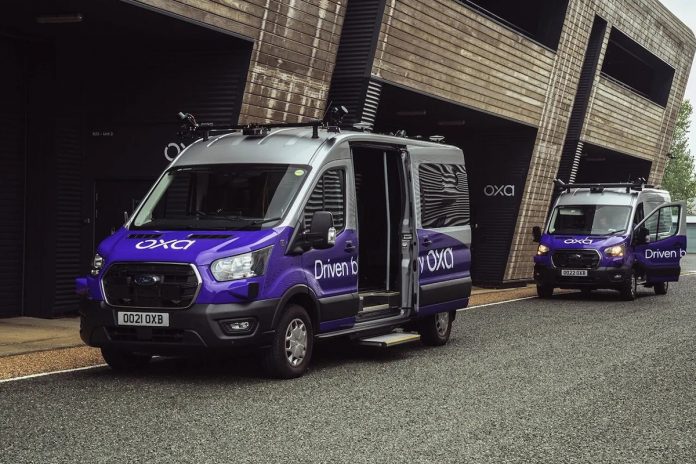Oxa has revealed its autonomous Ford E-Transit van and minibus, powered by the AV technology company’s Oxa Driver software, have begun operating on UK and U.S. roads.
In aiming to offer a new, cost-effective, platform for goods delivery and passenger services globally, Oxa said that the launch marks a key step in the commercialization of self-driving technology. The Ford E-Transit, Europe’s best-selling large electric van, now driven by Oxa software, offers a new cost-effective platform for both goods delivery and passenger services all over the world.
Oxa’s Ford E-Transits represent the first mass-production vehicles it has converted to support advanced autonomy operations through Oxa’s Reference Autonomy Designs (RADs). These design blueprints allow for the rapid integration of autonomous capabilities onto traditionally non-autonomous ‘host’ vehicles, through technologies such as ‘Driven by Oxa’ software and sensors, compute and drive-by-wire systems.
Oxa defines, prototypes, and validates its RADs before they go on to be used by OEMs and upfitters to mass produce autonomous vehicles, with flexible distribution and licensing models – a process that the company says is key to scaling the commercial deployment of future autonomous vehicles. The testing and validation process more closely utilizes a combination of controlled environments, real-world driving and virtual testing using Oxa’s Spatial AI technology. Here, generative AI, digital twins and simulation allow accelerated training and evaluation tailored to the customers’ needs.
The E-Transit itself has been designed to integrate into existing fleets and is configurable for both logistics, as a van, and passenger services, as a minibus offering up to 10 seats. To maximize the vehicle’s available interior space, Oxa utilized a compact design for its integrated autonomous hardware. At the same time, the company highlighted the low energy utilized by the Oxa Driver software, allowing the vehicle to run for longer.
Within the vehicle’s sensor suite are a combination of cameras, LiDAR, and radar. Its 360-degree perception and long-range detection capabilities enable autonomous operations at up to 35 mph in mixed traffic scenarios. Though, the company confirmed that the E-Transit’s manual controls have been preserved, allowing it to be used flexibly in a non-autonomous mode as needed.














